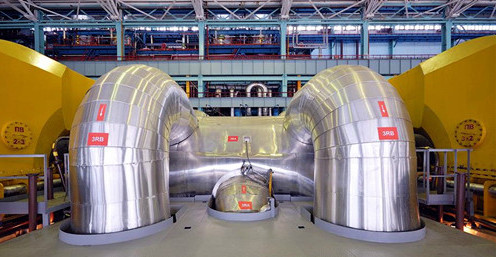Ventilator valve, blow down valve and reverse flow valve for turbine system
As a prime mover for large, high-speed operations, the steam turbine is one of the main devices in today’s coal-fired power plants, used to drag generators to convert mechanical energy into electrical energy. The steam turbine is characterized by a large volume and fast rotation. When it is transferred from the static state of normal temperature and pressure to high temperature and high-pressure high-speed operation, the regulating valve of the steam turbine plays a key role in stabilizing the speed and controlling the load. Only the stable and accurate operation of the valve can make the steam turbine work safely and efficiently. Today here we will introduce the three main valves like ventilator valve, blowdown valve and reverse flow valve for you, if interested, please read on.

Ventilator valve(VV)
When the middle-pressure cylinder of the unit starts to operate under low load, the high-pressure cylinder has no steam or less steam intake, and the vent valve is closed. This will cause the blade of the high-pressure stage to overheat due to friction blast. At this time, install a ventilation valve in the exhaust pipe of the high-pressure cylinder to keep the vacuum, similar to a blower, so that there is a little steam or air as possible in the high-pressure cylinder to reduce the blast. It connects the high-pressure cylinder with the condenser vacuum to prevent friction or excessive blast exhaust temperature when the load is low.
In addition, after the steam turbine trip, the ventilation valve automatically opens and the high-pressure cylinder steam quickly flow into the condenser, the turbine high-speed low-steam flow will have a blast of friction high tail blades to prevent because of the high-pressure steam pressure cylinder shaft seal leakage through high school into the intermediate pressure cylinder (the middle-pressure cylinder for vacuum) caused by rotor speed. It can also be used to prevent speeding.
In addition, after the steam turbine tripping, the ventilation valve automatically opens and the steam in the high-pressure cylinder is quickly discharged into the condenser. At the time of high-speed and low-steam, the air blast friction heat generated at the tail end of the high-pressure blade is reduced to prevent the steam from leaking into the middle-pressure cylinder (vacuum state) through the high-pressure cylinder shaft seal, resulting in the rotor Overspeed. It can also be used to prevent speeding.
High-pressure discharge ventilation valve is generally used in the unit in the middle-pressure cylinder or high-pressure cylinder combined with the beginning of the open to prevent air friction metal overheating (especially at the end of the high-pressure cylinder blade) caused by damage due to too little steam. In order to prevent over speed after slugging, some units can also open the ventilation valve to quickly drain the high exhaust steam. Some units also need a ventilation valve to take the heat away from the cylinder after the quick cooling after the shutdown, which is then discharged into the expanding container and finally into the condenser.
Blow down valve(BDV)
For high and middle-pressure cylinder units, in order to prevent the high-pressure cylinder and steam pipe tube of a small amount of steam channeling to the middle-pressure cylinder, the low-pressure cylinder, or the steam seal gap is large and the unit overspeed due to the steam seal tooth wear. Where a blow down valve(BDV) is installed. When the unit trips, the BDV valve opens quickly to direct the remaining steam from the high/medium pressure steam seal to the condenser to prevent the unit from overspeed. The opening and closure of blow down valve are controlled by the stroke of medium pressure regulating valve oil motor:
When the stroke of the oil motor of the middle pressure regulating valve is ≥30mm, the BDV valve is closed;
When the stroke of the middle pressure regulating valve oil motor is <30mm, the BDV valve opens.
The solenoid control valve provides a working magnetic field when compressed air enters the upper piston of the valve. When the electromagnetic control valve loses its magnetism, the upper part of the piston of the BDV valve is communicated with the exhaust and the air pressure is released. The piston moves up to open the valve under the action of the spring force.
Reverse flow valve (RFV)
There are no bearings between the high and medium pressure cylinders, which are communicated through the steam components of the rotor shaft seal. When the steam turbine is tripping under high load, the high and medium pressure regulating valve quickly closes and cuts off the steam turbine to prevent overspeed. However, at this time, the medium pressure cylinder is a vacuum, which causes the high-temperature/high-pressure steam of the high-pressure cylinder to return and leak from the shaft seal and continue to expand, thus causing overspeed. To prevent this from happening, a pneumatic BDV can be installed in operation when the pressure regulator valve closed, most of the leakage of steam directly to the exhaust device. When starting in a cold state, the auxiliary stream is led to the high-pressure discharge reverse valve through the RFV valve and discharged through the high-pressure inner cylinder steam trap and the high-pressure steam guide pipe steam trap.
More information, contact us now!



Leave a Reply
Want to join the discussion?Feel free to contribute!